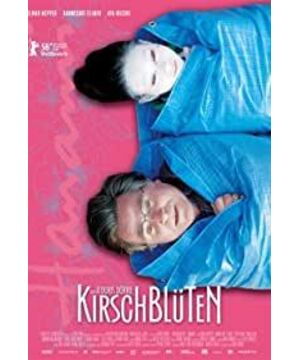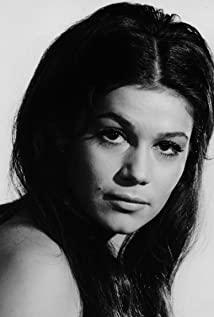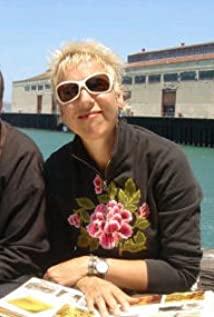A large part of the charm of Ozu's films lies in the rhythm of its narrative, that is, the tension in the soothing of human relationships and changes in the world. This is a kind of wisdom that is almost "Eastern" - from this point of view, the West pays its attention to this as a good medicine for "civilization disease". A pan-human interpretation regards it as the "nostalgia" of all mankind, a "homeland" that cannot be returned and is extremely longing for. At the narrative level, the film shows Rudi and Du Li's daily life in turn (step by step, sticking to each other), their trip to Berlin (in the Baltic Sea, Du Li died), the relationship between the elderly and their children (Klaus family, gay daughter) , The above two people have complaints about their mother's preference for Karl in Tokyo), Rudy's trip to Tokyo (Rudy's lost in Tokyo, Rudy and Carl's uneasy getting along, Rudy and Yu's intersection together to Mount Fuji, Rudy's death ). It should be said that in addition to Ozu's "Tokyo Story", the director tried to show the tension of the relationship between the characters with a richer narrative level, in order to explore the new variables in the relationship between people in different eras, such as homosexuality, huge Tokyo metropolis, people oppressed by work, etc. These narrative layers are based on the thinking that Ozu will continue in "Tokyo Story": the dissolution of the family, the alienation of interpersonal relationships, and the alienation of the relationship between the city and people. However, in the current situation and vision of Western society, these aspects are facing even greater changes. This is also the reason why Japan can be used as the "hometown of another country" in the West - and the film shows the process of the disintegration of this virtual "hometown" through Rudy's trip to Tokyo. (Of course, the film also uses images such as Buta, cherry blossoms, and the character Yu to give a hope, which will be discussed later.)
The charm of Ozu's films also lies in the well-received aerial shots - those unpredictable and just right aerial shots in the narrative, on the one hand, hinder the progress of the narrative, causing a kind of rupture, on the other hand. It also makes the empty scene and even this fracture form a self-sufficient existence, only waiting for the audience to watch. There are also many such aerial scenes in this film, involving landscapes, buildings, trains, ducks, cats, crowds, etc. Based on Deleuze's analysis and elaboration of these aerial scenes in "Time-Image", these aerial scenes have properly formed a self-sufficient existence with the block and rupture caused by the narrative flow. Deleuze's time, and even its metaphysical universe, is an identity based on difference. This ontology of difference refuses to reduce time, objects to homogeneous beings: thus, in the ever-becoming, the latent/past part of time, the reality/present is constantly becoming, and the present will not be the same Exhausting the past, it is constantly generating the future as it generates the past toward potentiality. Figuratively speaking, it is like the ebb and flow of the sea. Speaking of these, it is to determine the position of these aerial shots in the film in this "generation" process: the aerial shots are "singularities", a self-sufficient existence, in the constant generation and change, and Beyond the ever-generating changes. The appropriate way for the audience to watch the film is to adopt a method of "contemplation", to face the existence of these still lifes and landscapes, and thus perceive the existence of a vast universe - such a universe essentially constitutes a meta-movie. Just imagine that if those aerial scenes in this film are picked out and edited together, these self-sufficient "singularities" will instead form a stream of images that parallel and transcend the film's narrative line - a kind of "meta-movie" image.
Next, answer the second question, how the living and the dead, the present and the past communicate. What is the most immediate manifestation of death? That is, we never see the dead again. Here, death is perceived as a kind of disappearance: the disappearance of the voice, the smile, the disappearance of the taste (Karl cried after eating the meal that Du Li used to cook: I miss Mom, I can't imagine she's gone), and so on. As Rudy reiterates in the film: I didn't know Du Li was there now. In the film, life and death, present and past are expressed in at least three images: mayfly, cherry blossoms, and Mount Fuji. Generally speaking, the former two are short and gorgeous, while the latter are long and silent. "The time of the day is its destiny, and the flight at dusk is its paradise." The mayfly, the cherry blossoms blooming and drifting in the sun, reminds the shortness of life and the approaching death - just like the ever-changing past /potential. The vitality of Deleuze's theory lies in inspiring the vitality of the past/potential: those "disappearing" past/potential are not just suppressed on the edge of history and become a series of meaningless traces; on the contrary, the past/potential is just like The calm on the surface and the turbulent sea on the inside, one after another, become waves of reality/present. From this point of view, mayflies and cherry blossoms have a boundless and vast time between their instant life and death; under the white snow, Mount Fuji can be born and die instantly. This is the dialectic of life and death. Therefore, whether it was Du Li's unforeseen death or Rudy's death that was told long ago, before her death, at the moment of her death, and even after her death, the space-time universe she was in was extremely vast: as long as a mayfly and cherry blossoms , as short as Mount Fuji.
Those, what are the ways to communicate the living and the dead? In the film, at least two ways are provided: Rudy's way - wearing Du Li's clothes, walking all over Tokyo and walking towards Mount Fuji; Yu's way, or the way of Butoh - at the time of Butoh, life is born The deceased danced with the deceased, just as Yuu said "My mother is inside me" during the performance. Because her mother likes to chat on the phone with a pink phone, she used the phone as the main prop in her dance performance. In a sense, the audience naturally cannot evaluate which method is more effective. Just remember, when Rudy put on a separate blue sweater, opened his coat under the cherry tree and said, "Dulli, did you see it?" These scenes undoubtedly have very moving emotions. The director seems to appreciate the way of Butoh more, and this attitude is annotated by the two "dances" between Rudy and Du Li in the film: once in the German country, Du Li danced with Rudi; once under Mount Fuji By the lake, the dancers dressed Rudy and the dead Du Li's "Dancing". The film has a lot of space to show the scene when the dancers are dancing. It should be noted that Buto evokes different emotional responses in the hearts of Eastern and Western audiences: shame, confusion and infatuation, admiration. Buto and Buddha release have become a touchstone for testing Eastern and Western values. This dance, through its body, movements, and expressions, communicates the living and the dead in a direct way, unlike religious rituals, which are a safe and distanced isolation. In this sense, the Eastern values that emphasize intuition and emotion have become the "Other" of the Western tradition that emphasizes reasoning and rationality, and are stared at by the Western Other.
The third problem is the West's pursuit of the East's imagination. Why is a foreign land your hometown? This misrecognition and misplacement stems from a scarcity, the "loss of the West," or the "death of capitalism." In the hundreds of years since the Industrial Revolution, the material and spiritual achievements of Western society have been accompanied by the loss and separation of society and families. Hence the search for the East. As the east of the film, Japan, in the film not only cherry blossoms, Mount Fuji, Butoh, but also a giant city like Tokyo, endless crowds, light rail, and homeless people. In other words, this imaginary "hometown" is also experiencing the process of alienation. At this point, the director is not without a clear understanding, and this is where the film deserves praise. In this sense, Mount Fuji, presented as an imaginary place that attracts the attention of both the East and the West, seems to carry a lasting value and become a winter fairy tale.
View more about Kirschblüten - Hanami reviews











